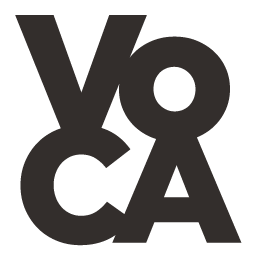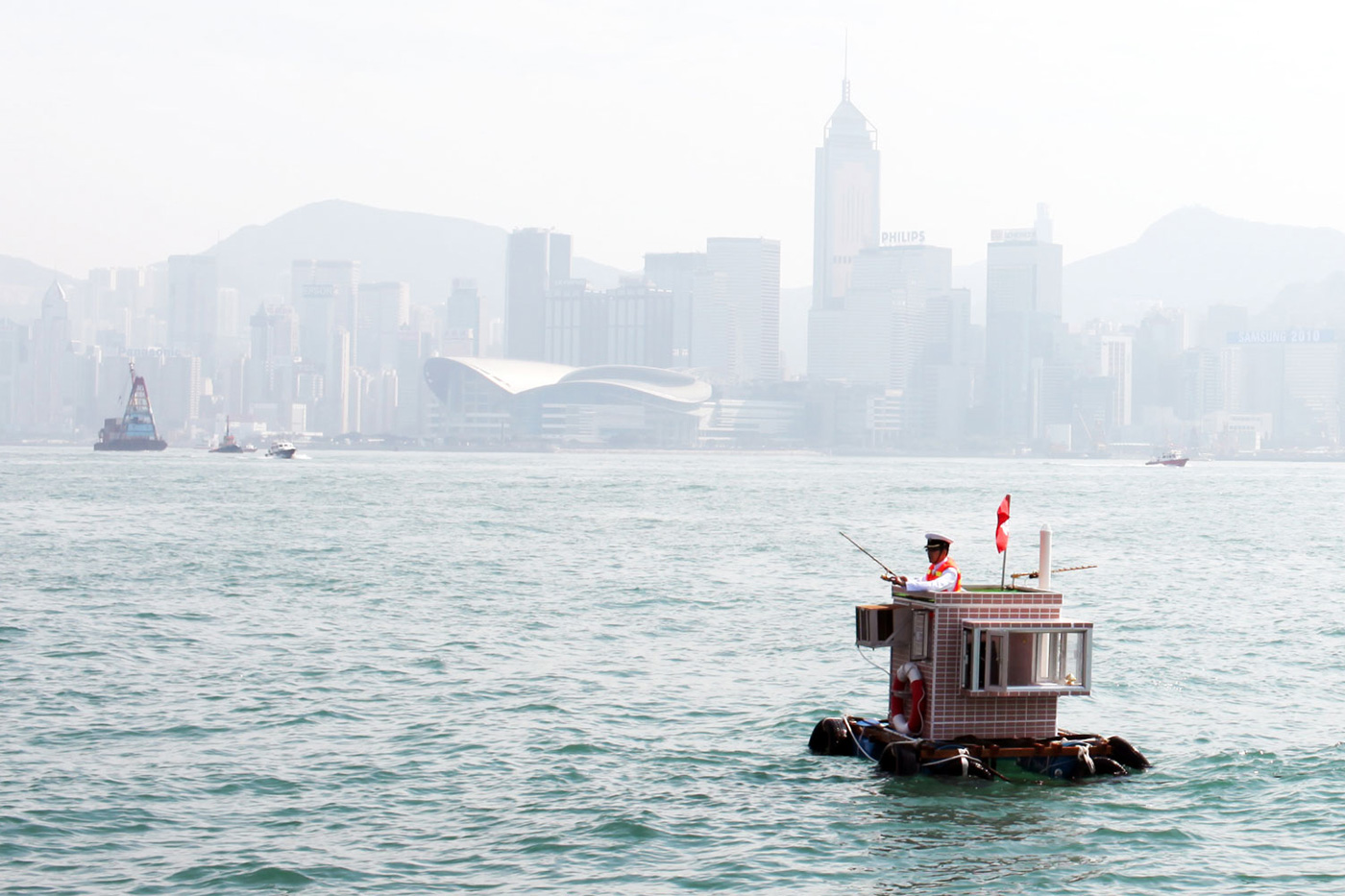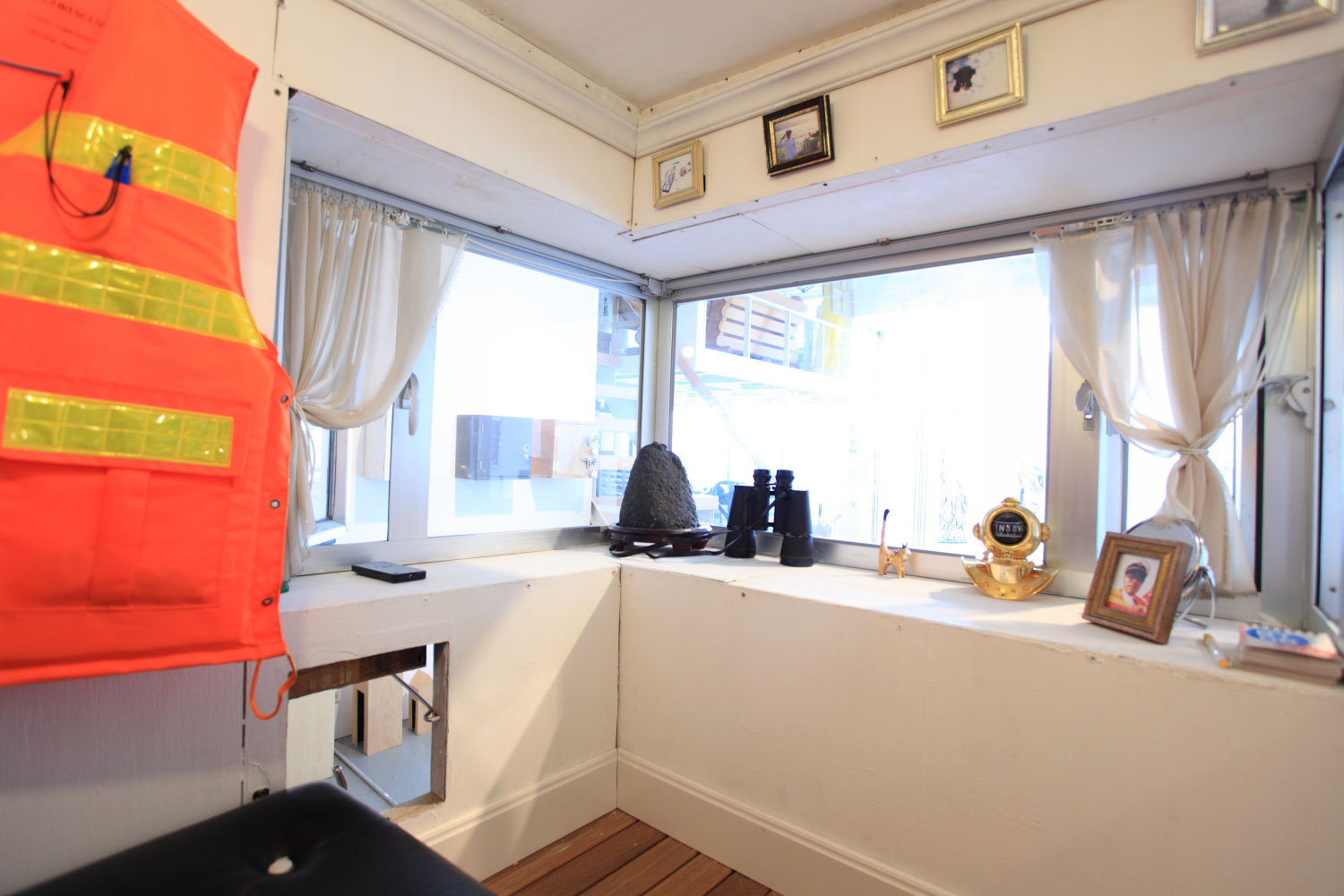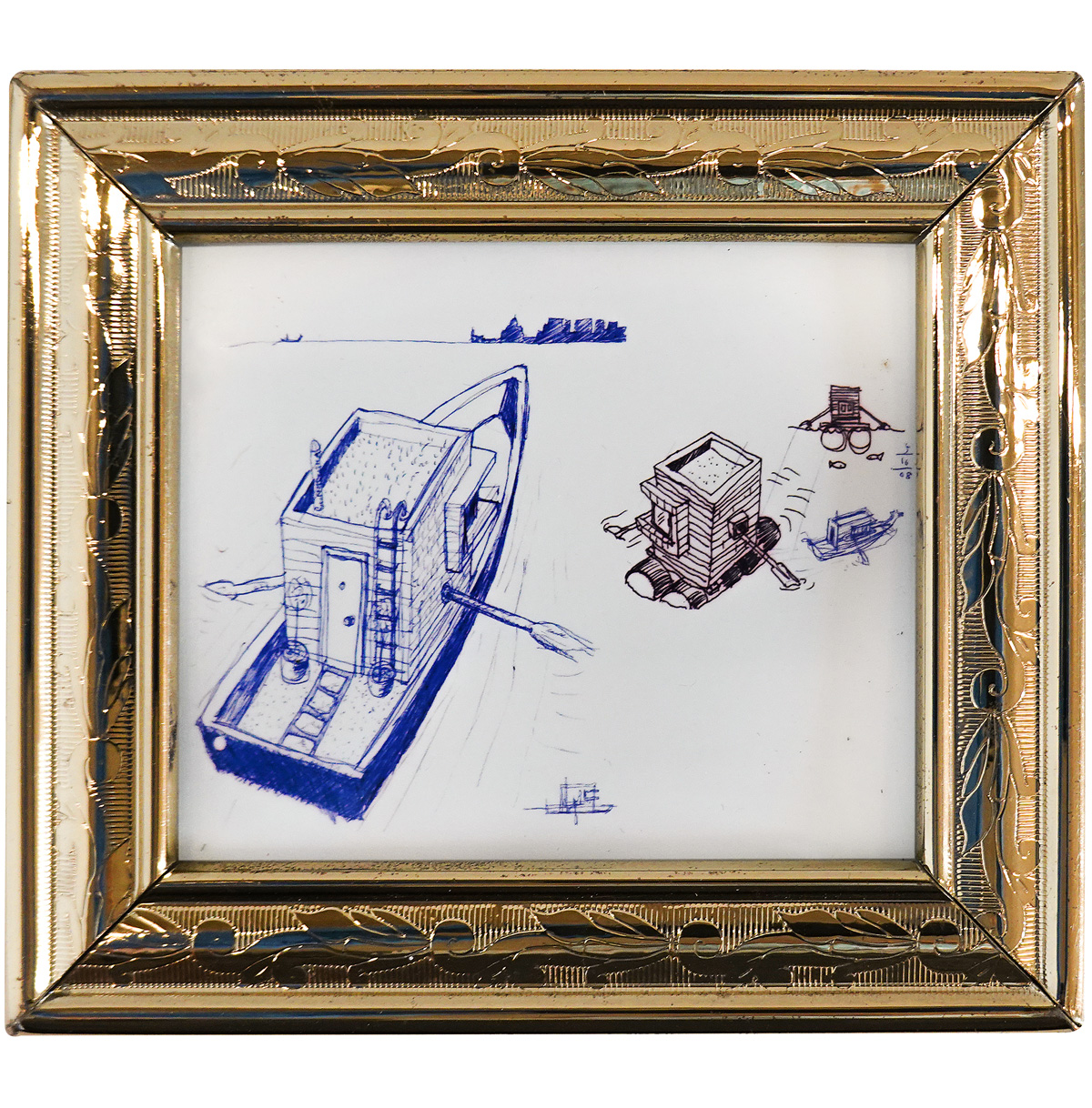Embracing and managing the possible future changes of Kacey Wong’s Paddling Home
"And for those who have not sailed the Victoria Harbour in this four-foot by four-foot volume, they have no idea how dangerous the ocean is. Just like if you have not purchased a home in Hong Kong, you have no idea how scary and dangerous it can be.”
– Kacey Wong
Documenting artistic intentionality and creative processes in contemporary art often challenges conservators when they are framing discussions with artists.1 Since contemporary art frequently focuses more on concepts than on techniques and materials, an active area of research for conservators is how to improve documentation methods and share the knowledge gained from these exercises to ensure the successful presentation and general safekeeping of complex artworks.
M+ Conservation faced many documentation challenges in preparation for the museum’s inaugural exhibition in 2021, for which about fifty complex installations were selected. For a museum still not yet physically born and unable to access many works, the need to collaborate and cultivate relationships with artists, who were considered to be essential institutional stakeholders, was a vital part of the institutional mandate. Thus, the artist interview became the key tool to implement best practices for our conservation documentation.
In order to better prepare myself to undertake this mission, I attended VoCA’s Artist Interview Workshop held at New York University’s Institute of Fine Arts in 2019. The program, which focused on Time-Based Media Art, would allow me to deepen my knowledge in the methods and social skills needed to conduct successful artist interviews and around oral history practices. The experience allowed me to apply the set of skills learned in the decision-making process for developing conservation and presentation concepts for the selected media installations. It also prepared me for building longer relationships with artists to solve particular conservation issues and unfolding meanings for the artwork’s preservation and longevity within the institution.
The M+ team first met Kacey Wong in 2019 when planning to conserve and install one of his works, Paddling Home, which was selected for display in the Hong Kong: Here and Beyond exhibition. Wong is a visual artist and educator trained as an architect who recently relocated from Hong Kong to Taiwan in 2021.
Paddling Home was realized by Wong as a four-foot by four-foot structure that duplicates the extraordinarily tiny and expensive living conditions of the local population. Made with construction materials typical of Hong Kong residential buildings and ready-made materials, it also captures the material changes to the urban environment from the post-war decades to the present day. Consisting of numerous components, the artwork is a social experiment that questions the idea of public and shared space and criticizes the city’s dense urban environment.
Referencing the floating theatre “Teatro del Mondo,” built by architect Aldo Rossi for the 1980 Venice Biennale, “Wong shares Rossi’s interest in exploring the role of architecture in holding the collective memories of a city through its form, iconography, and materials.”2 Wong’s cube was tethered to four blue plastic barrels and launched by the artist onto Hong Kong’s Victoria Harbour during the 2009 Bi-City Biennale of Urbanism/Architecture in Shenzen and Hong Kong. During the performance, the artist dressed like a sea captain and playfully fished and golfed atop its roof garden, which conferred special status to the structure, similar to housing units in the city with rare private outdoor space.
The project is accompanied by two single-channel digital videos made in collaboration with film producer and director David Attali. The first one is Paddling Home Performance (2010), which depicts the artist’s journey on Victoria Harbour centred around the danger of the ocean.3 It witnesses the boat launch in documentary style and clearly shows the artist’s first manifestation of this work.
The second shorter video, Paddling Home, also realized in 2010, deals with the artist’s inner psyche.4 In this video, the artist salutes the sunset, or the Victoria Harbour, or perhaps Hong Kong itself, in what he describes as the love and dedication to the city that visitors can reinterpret in many ways, such as duty, love, honour, and service in front of the unknown horizon.5
On September 6, 2019, during a very typical humid morning in Hong Kong, the M+ team, composed of former colleagues Albrecht Gumlich, Fei Tse, and the author, sat at a table in Kacey Wong’s studio with the artist’s assistants, Man Chan and Car Yeung. The interviewers were selected because of their in-depth knowledge of the artist’s life and work, which allowed for informed conversations to naturally follow the narrator’s lead. Using a professional audio recorder and printed images of the work intended to trigger memories, the resulting transcript represents our first encounter with the work just before its packing and transport to the M+, as was scheduled by our registration team to occur on the same day.
Referring back to some of the lessons I had learned as a participant of VoCA’s Artist Interview Workshop, I made sure we went into this conversation with an awareness of our institution’s position of authority and desire to build a trusting relationship with the artist in order to develop a level of autonomy in evaluating changes between the artwork iterations. Together the team agreed that our main goal was to understand the work as thoroughly as possible, and to be able to care for its current and future life within the museum. Starting points for our conversation were establishing the work’s variable elements and pinpointing the project’s intrinsic essence (e.g., what needs to be conserved, having to deal with impermanence, embraced decay, and a potential conceptual and material evolution). We sought to investigate aspects of the work including upgrade of the lighting system, creation of exhibition copies, care for physical objects, preservation of time-based media elements and their future display. In particular, we hoped to learn what the artist thought about shifting the artwork from a dynamic concept into a static archive of the event he staged in 2009, which was the core at the centre of this oral history.
Wong describes the central concept behind the artwork, which is about purchasing a flat in Hong Kong that he conveys as a very risky business. Although the work was created in 2009, he could already see how much the housing cost would escalate in the next decade. He wanted to create a piece about the risk and impossibility of finding housing, likening it to a dangerous adventure where one could die.
As Wong explained:
“The best way to equate that is the tsunami, you know like the ocean, it is kind of like at times it is peaceful, but at other times it can be really stormy or even like destroy your city. I used that as a site and using the skyline of the city as my canvas. That is the intention to tell my story. And the boat is just this kind of free house, alright? A hands-on flat, on the roof like a captain on deck with some kind of control. So, but in reality, this control is an illusion, and you just kind of drift around with the unexpected ocean, and at worst you topple, just like what I experienced back in 2003 when Hong Kong’s economy toppled and then you have all these flats, all these people, homes got confiscated by the bank.”7
If it were not for this interview and the passion expressed by the artist, we would not get the pure sense and meaning of the creative process and realization of the work.
As custodians of contemporary art, we feel quite sensitive to the uniqueness, replaceability, and changeability of these artworks. This is why the conversation with Wong continued with the analysis of the components and their current state of conservation in Paddling Home to determine his feelings regarding material change through wear and tear, degradation of plastic materials, and any potential object substitutions that might be required. We also posed questions that drove at the meaning behind the individual components he selected, including those decorating the bay window, while generally noting that nothing is new but rather found objects that might have emotional meaning for the artist. In honing in on a few details, we learned, for instance, that a little cat ornament, which is a common home decoration in Hong Kong, is meant to humanize the whole space. Likewise, a bottle of wine and the wine glass are supposed to convey a feeling of an imagined middle class, or even upper class, but the joke is on us as we become aware that it is actually a very cheap wine.
The tableau he created here is of a dynamic house belonging to an individual. This is why all the interior objects should be oriented towards the gaze of the viewer, who becomes the owner of the house rather than just the viewer. The sense of intruding into someone’s privacy is Wong’s intention.
At this point, we started to walk around the house and examine its more intrinsic parts, such as the exposed sewage pipes, motor, oars, and Hong Kong flag, which triggered further reflections and helped the artist share tactile details we may have not considered otherwise. For example, during the conversation, Wong described his vision regarding the use of a bulky air conditioning unit, for which corrosion and appearance were highly intentional. Currently hollowed out, the air conditioner serves a refunctioned purpose as a wine cellar. For the artist, the paddles are superfluous and could be replaced in the future, together with a lifesaver, should a decision about substitution be made. This comment came as a surprise as the paddles were used by Wong to fight the sea in his 2009 performance. When Wong tried to paddle, he even equated this act to paying one’s mortgage.
“Every time you row once it is kind of like you are paying one month’s mortgage and it is like it does not move, because you owe so much money and yes and then it is like you push hard and it is not going anywhere it feels like it is, you still have to paddle like a slave for the next thirty years. That is the kind of feeling I had. So, I paddled a few times and then I just gave up.”
Then, we looked at the five digital prints that are framed and displayed inside the house and discussed their current faded condition caused by the lighting component inside the house, along with ten years of exposure within a space that could not follow the museum standards for long-term preservation. Wong embraced conservation recommendations about the future realization of exhibition copies when originals become undisplayable and explained that light is a very important ingredient in his work. Indeed, the Paddling Home interior must be kept illuminated to give the sense of a warm domestic environment. During this portion of the conversation, we learned that he is keen to provide us with digital files of the photographs intentionally selected and arranged by the artist in a specific configuration, starting with the sketch of the project that is placed to the left to begin the sequence.
As he said about their importance:
“Then you have the lifting of the boat, it’s like a flying house, that’s interesting, and then you have me at the press conference, the launching ceremony which is very important for any boat, to make it official, make it formal, and then you have me, I think like practising golf on my roof, and then the mission complete, saluting to the city or towards sunset.
For example right now we are standing on the side where the wine is, the sewage pipe is looking into the interior, and right to the left of the air conditioning unit you will see a picture of a shot taken from the interior looking out of the window and you will see the ocean, and that ocean is almost like filling half of the window, almost making it like a nightmare, like your window in the living room got flooded with water. So that is intentional, as a kind of metaphor of drowning.”
In this way, we actively listened to his thoughts and offered possible solutions in a collaborative manner. Once again referring to VoCA’s Artist Interview Workshop, I was reminded that the artist interview is a partnership more than a monologue, a co-produced knowledge which helps us make sure our contribution can guide the development of the work in its new context.
When we came to the display of the artwork at M+ and what type of relationship the work should have with the surrounding gallery space and visitors, our questioning attempted to understand how Paddling Home should be approached and appreciated. For this purpose, we tackled the anatomy of the work, specifically in consideration of the fact that we were also receiving a donation by the artist consisting of additional materials that were part of the launching ceremony: the banner, the captain uniform, and shoes belonging to Kacey Wong, the sailor uniform belonging to Stanley Wong, and the cap of the uniform made by the supplier of the Hong Kong policeman’s cap, something that Wong is very proud of. The entire assemblage constituted more of an archive of his performance than a standalone artwork. The starting point of this discussion was the assumption that any future reiteration of this project will most likely never be the same if we truly embrace repetition and difference. It has to be noted that this was an unexpected outcome of the interview and only a result of letting the conversation flow naturally while allowing the artist the time and space to recall forgotten details.

Installation view of ‘Hong Kong: Here and Beyond’ at M+, Hong Kong, 2022. Kacey Wong, Paddling Home, 2009, wood, ceramic titles, aluminium windows, stainless steel gate, pipes, plastic barrel, framed photographs, lifesaver, boat paddles, antenna, HKSAR flag with aluminium pole, foldable sofa, copper diver’s helmet, life jacket, fishing rod, golf club, desktop mirror, Earth God shrine, electronic door bell, cat ornament, bottle wine, wine glass, motor, hollowed out air conditioning unit, used tires, sealed plastic barrels, and front door keys, overall: 278 × 220 × 290 cm. M+, Hong Kong. [2019.145]. © Kacey Wong. Photo: Lok Cheng. M+, Hong Kong.
As a visionary and flexible artist, Wong is significantly influencing M+’s conservation team and my view regarding the artwork’s possible futures and continuation, while embracing the idea of being creative collaborators in addition to being custodians in the traditional term. We must allow the digital objects’ presentation to be expanded in the future and acknowledge that changeability is part of the work. For the artist, Paddling Home should be subject to continuous reinterpretation and actualization.
As he has noted:
“We should aim for a representation methodology that is suitable for the Museum, and the way I envision M+ is more into reinterpretation of the work that somehow deals with the core of the matter of the, you know, artistic expression.”
Kacey Wong has successfully contributed to the determination of possible future developments of Paddling Home for an ongoing collaboration that sees the artist giving space and freedom to interpretation to both the museum’s conservation and curatorial teams. We welcome an open-ended dialogue with Wong to capture his input and reflections on how this work is displayed in future iterations and we are currently planning a second interview to discuss the current presentation of the work within the Main gallery.
This artist’s interview has been tailored as part of a larger interview process and, again, in response to the knowledge and skills acquired through the VoCA Workshop. Overall, I shaped several conversations and interviews after my experience in New York, while consolidating people-based research, which was essential during the preparation of installation artworks planned for the inaugural exhibition of M+. Kacey Wong, influential artists from Hong Kong and other pioneers, such as Allen Pau, Nalini Malani and Haegue Yang, between many others, have been involved in this interview process. By contributing and collaborating with Conservation, they have responded to preservation requests on the artistic medium, significant properties, parameters of change, risk, and expertise, which has greatly assisted Conservation in constructing a viable platform for the care, maintenance and future presentation of the works.
I believe that the study and preparation I had for this particular interview – as well as my way of shifting points in our conversation with flexibility – were a direct result of the teaching I received at VoCA’s Artist Interview Workshop, where I was provided with effective familiarization with practical interview techniques. The need to be adaptable according to the artist’s personality within a specific framework while exploring ways to disseminate the knowledge gained became further clear as part of my mission.
I have utilized the VoCA experience to tailor interviews at M+ and to develop a sustainable and practical strategy for securing correct interpretation for more than 10 artists. Managing and documenting the complex artwork’s changes remains one of the main focuses of Conservation at M+ and artist interviews will continue to play a vital role in that process.
1 For historical examples of writing on artist intention in conservation literature see “Part II: The Original Intent of the Artist” (Stanley-Price et. al. 1996) as well as most recent writing on reliability and the value of the artist’s intent by Gordon and Hermens (2013) as recommended by Glenn Wharton.
2 Doryun Chong, Lesley Ma, Pauline J. Yao, Ikko Yokoama, M+ Collections Highlights, ed. Thames & Hudson, 383.
3 M+ Collection online, accessed July 30, 2022,
https://www.mplus.org.hk/en/collection/objects/paddling-home-performance-2019315/
4 M+ Collection online, accessed July 30, 2022,
https://www.mplus.org.hk/en/collection/objects/paddling-home-2019314/
6 Figure downloaded from the artist website, accessed July 18, 2022, http://www.kaceywong.com/new-gallery
7 Kacey Wong in dialogue with the author, September 2019.
8 All of Kacey Wong’s quotes are from the interview conducted in his studio on September 6, 2019.
9 Figure downloaded from the artist website, accessed July 18, 2022,
http://www.kaceywong.com/new-gallery
Main image
Kacey Wong, Paddling Home, 2009
Victoria Harbour launch
© Kacey Wong
Image description
A photograph of a person holding a fishing pole while standing on top of a raft that floats in the middle of a light blue-green body of water. The skyline of Hong Kong can be seen, though blurred somewhat by fog, in the background. The man wears an all-white outfit, nautical captain hat, and an orange life jacket with yellow stripes. The raft is made up of various objects and has a brick patterned platform and green top with a red triangular flag to the right.






